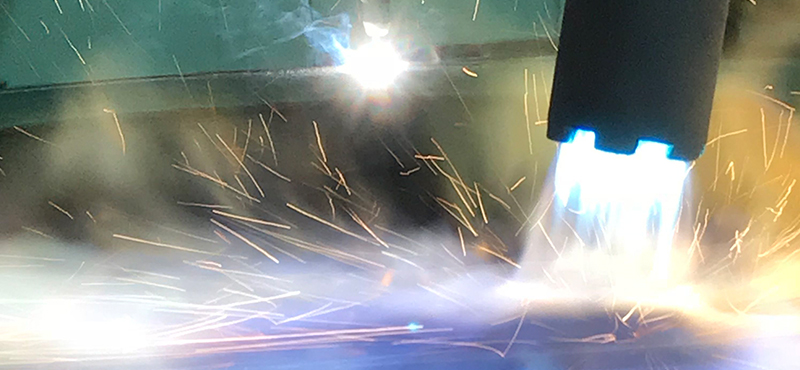The problem
Minerals processing machinery is expensive and endures extreme levels of erosion, corrosion, and wear and tear induced by repetitive impact. Shutdowns for repairs and maintenance of equipment can cost more than $100,000 for every hour of downtime. A key competitive advantage would be to increase the longevity of mineral processing equipment, but how might this be achieved?
The solution
LaserBond.Ltd, a pioneering Australian surface engineering company, and UniSA’s specialist Coatings Research Group at the Future Industries Institute, are developing some of the world’s most resilient minerals processing equipment through the use of composite coatings, called cladding.
Key researcher on the project, UniSA’s Industry Associate Professor Colin Hall, says industry experts in surface engineering, such as LaserBond, have long recognised the challenge and have specialised in the development of hard, wear-resistant coatings using laser cladding.
“Through this partnership we work with LaserBond to refine the technology, specifically focussing on key areas within mineral processing machinery prone to wear in different circumstances, to provide tailor-made coatings that resist that degradation,” Assoc Prof Hall says.
“UniSA’s extensive tribology laboratories can be used to perform accelerated wear testing in erosion, corrosion and impact abrasion, and combine these results to predict wear rates in the real world and then inform material and process optimisation carried out by LaserBond.”
LaserBond Engineering Manager, R&D, Dr.-Ing. Thomas Schläfer, says the collaboration between UniSA and LaserBond offers a range of advantages to both parties.
“We strongly believe that collaborations and co-funded projects between industry and universities are vital in increasingly competitive and globalised markets,” Dr Schläfer says. “Such projects give LaserBond access to expertise and facilities that would be impossible to develop in-house. Co-funding models help us benefit greatly from every R&D dollar and allow us to innovate and stay competitive in a global market.
“We also believe that UniSA and other scientists who work within the frame of such co-funded projects benefit from the cooperation with industry. We work in surface engineering, a subject which many universities worldwide put in a second place when it comes to teachings and courses. So, in our collaboration, university-industry cooperation fosters the flow of information on the latest processes and applications back into university teachings, thus supporting the education of future surface engineers and strengthening the Australian industry base.”
The latest phase of the collaboration between UniSA and LaserBond is a $2.4 million research partnership that also includes the Innovative Manufacturing Cooperative Research Centre (IMCRC). CEO and Managing Director of IMCRC, David Chuter, says the research collaboration builds on the long-standing collaborative partnership between LaserBond and UniSA to benefit Australian industry.

"Together, wear and corrosion continue to be a costly and disruptive challenge across many industries, and developing advanced materials and technologies for wear and corrosion protection will help both Australian and global manufacturers combat these challenges,” Chuter says.
“It is great to see, that through engagement with UniSA’s researchers, LaserBond, in collaboration with local manufacturers can develop its solution locally and then take it globally.”
Echoing this sentiment, Dr Schläfer believes that, while LaserBond and UniSA both derive great benefit from their collaboration, the most important benefits are those felt in the wider minerals sector.
“Through our collaboration we have been able to showcase our technology to new customers and prove just how good it is,” Dr Schläfer says. “The university has been able to expand its capabilities and generate industry relevant outputs and engagements, which helps the sector as a whole. For example, one outcome of our work together is a component for the drilling industry where the team developed a surface engineering solution that increased the lifetime by a factor of 10."
Partners involved


See more of our Industry Case Studies
PARTNER WITH US
We invite you to contact us to explore an opportunity and develop an exciting,
mutually beneficial and multifaceted relationship with you and your company.




